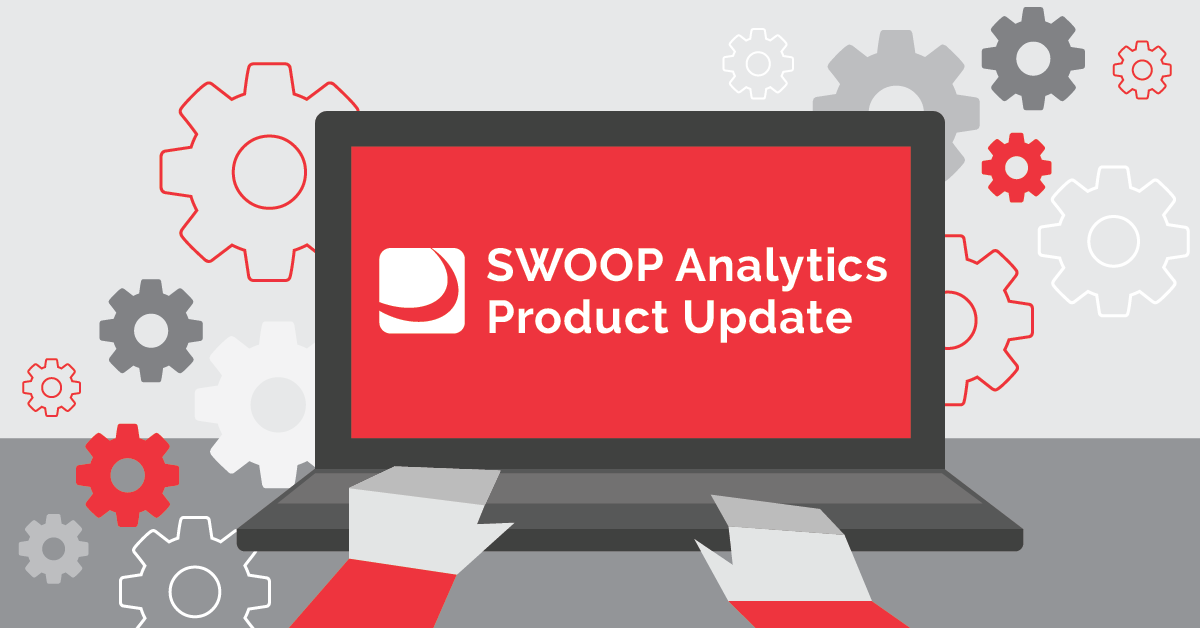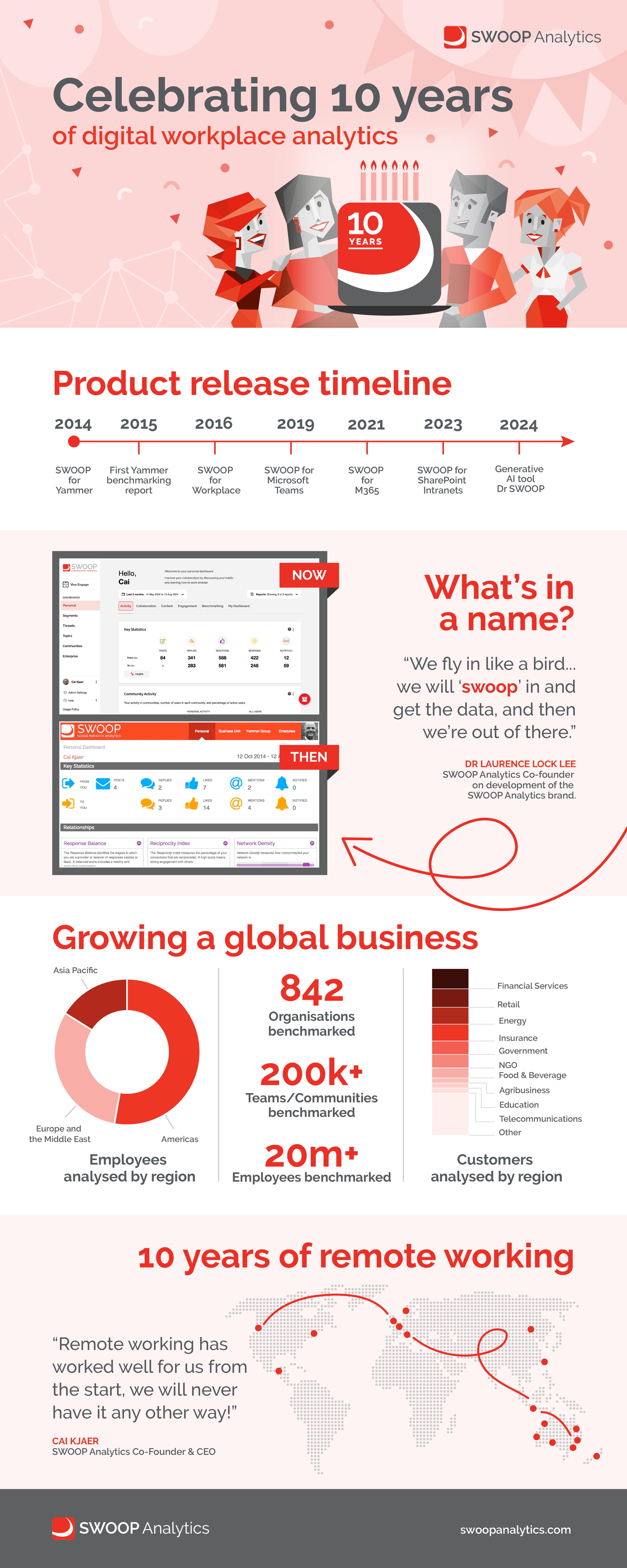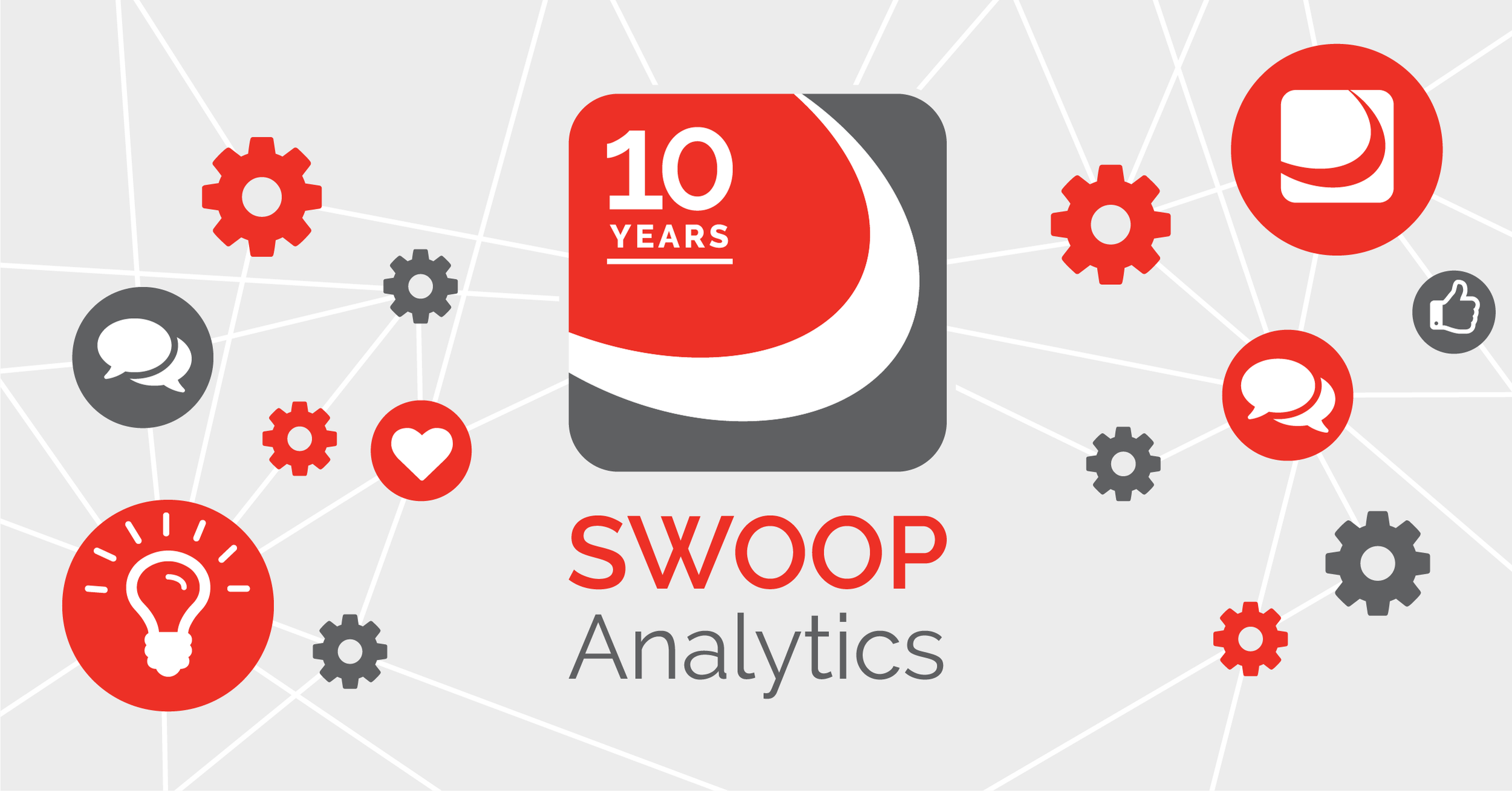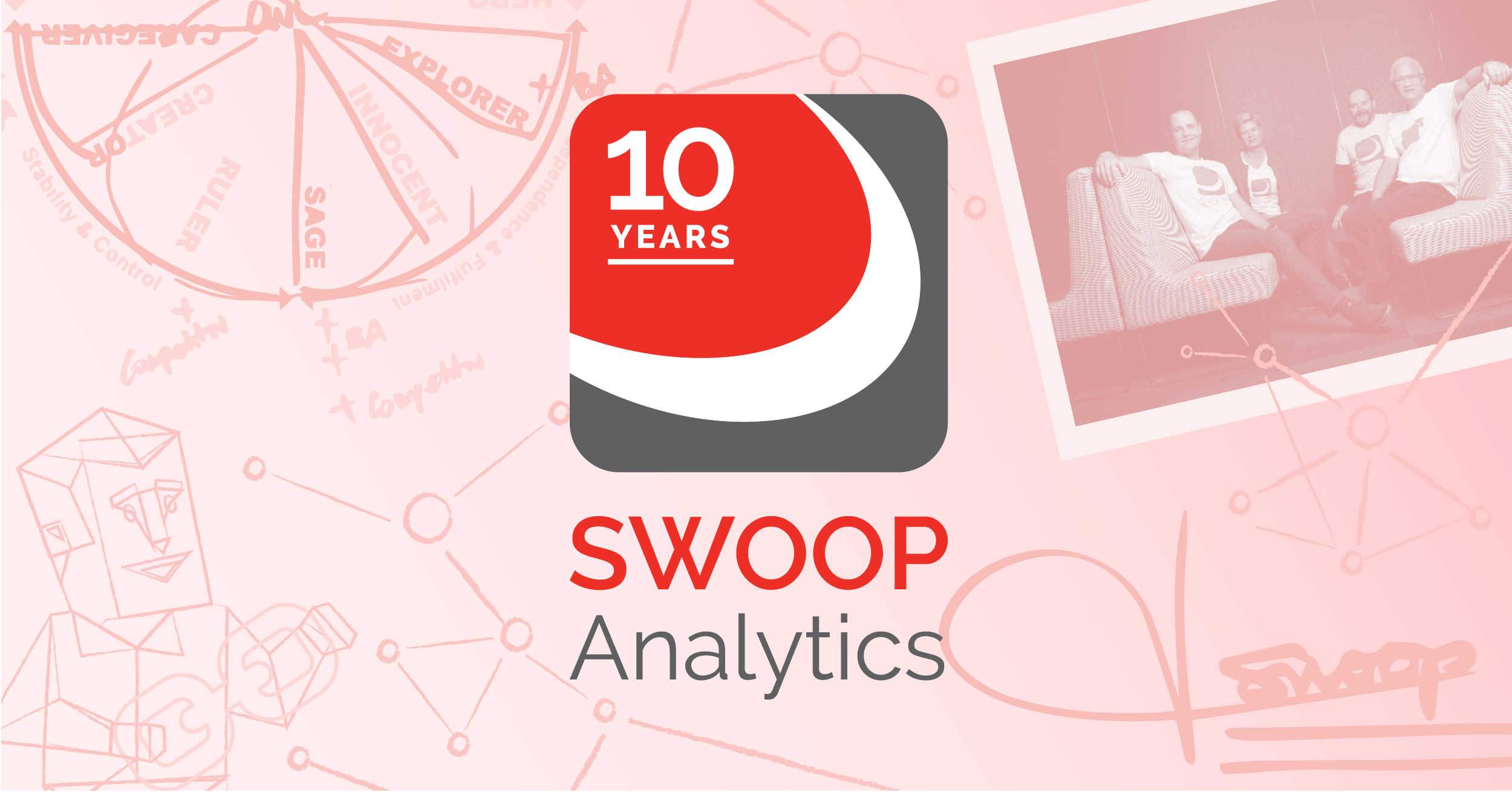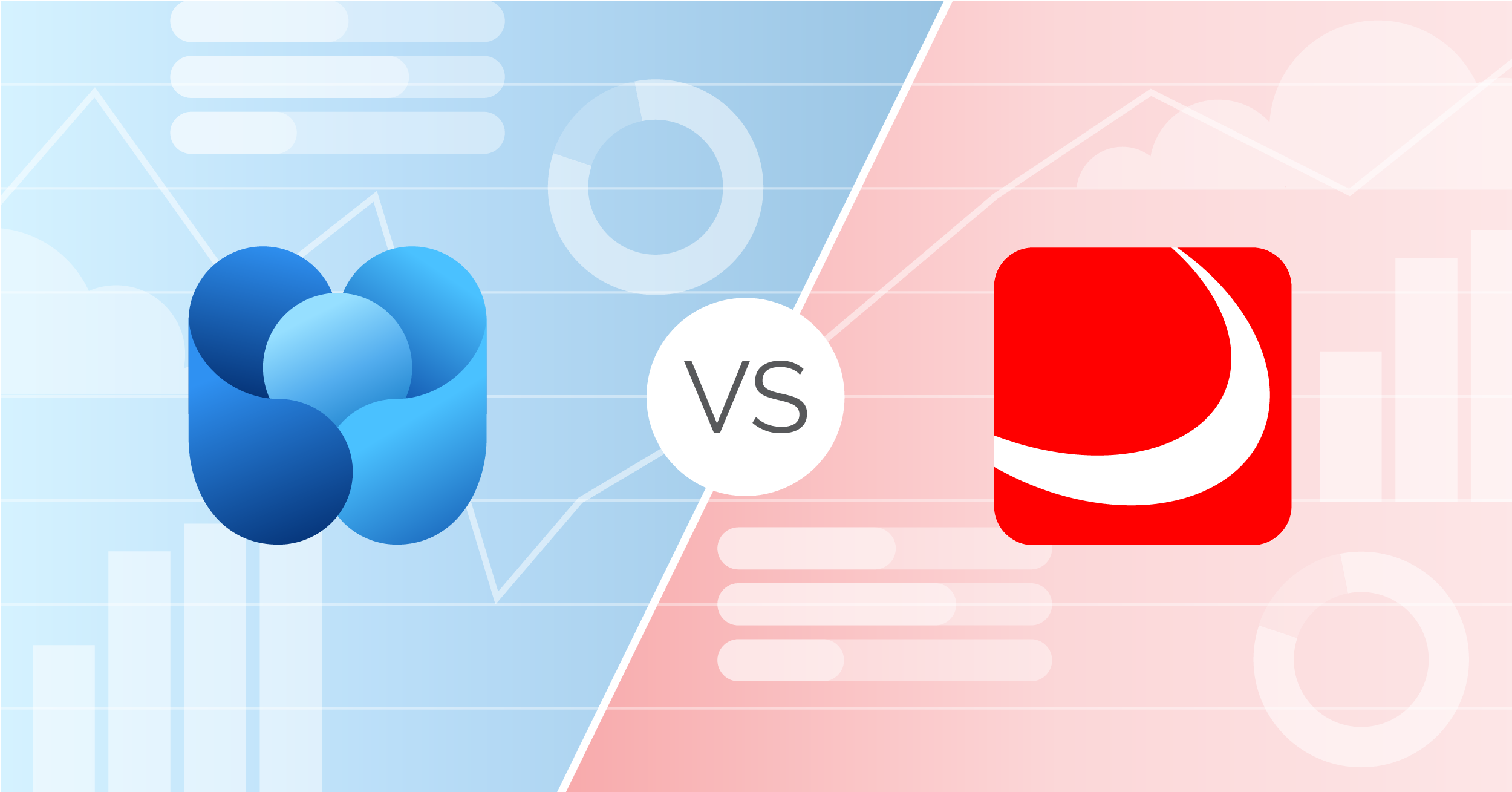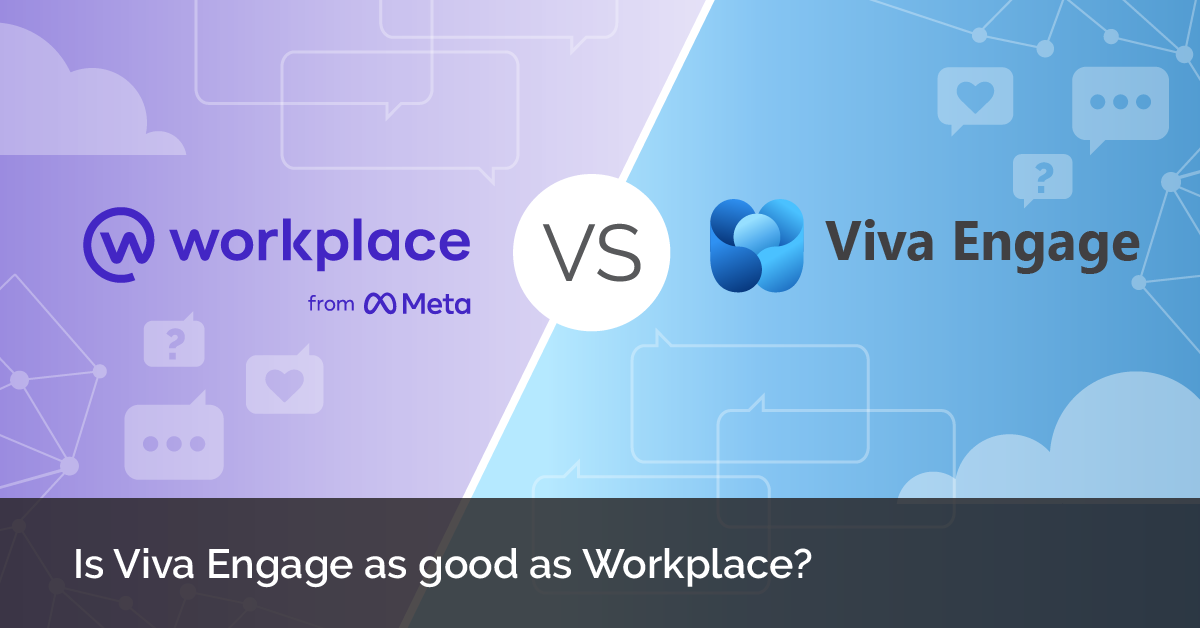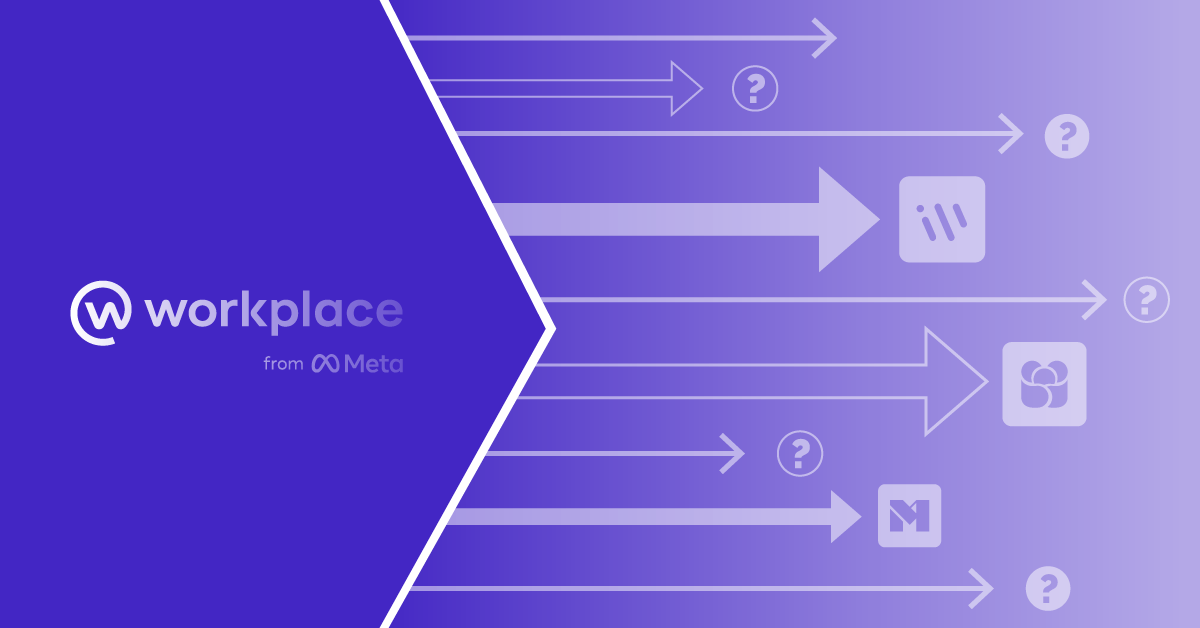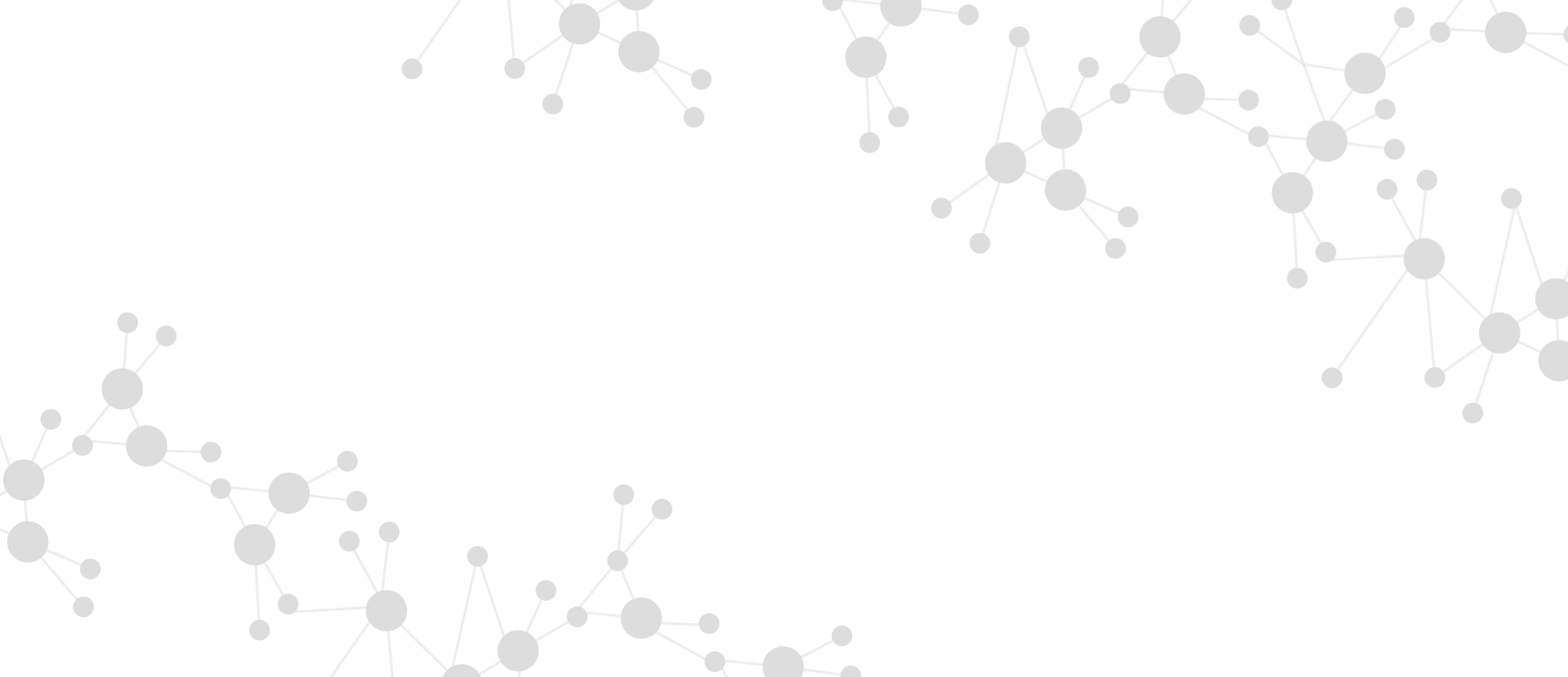
SWOOP Blog
Latest Articles
Blog Archive

Does your Community have a Key Player Risk?
An important characteristic of networks is that some individuals are more important to the performance of the network than others. In fact, if we were to plot the relative influence of individuals in a network, the degradation from the most influential to the least follows a power-law distribution.

The Doctor Is In: Practicing Enterprise ‘Social Radiology’
As we become increasingly consumed in our digital world, a common question we hear is “does our online behavior mimic how we are offline?”

Rely on Activity Measures from your Enterprise Social Network at your Peril
For most people “Social Analytics” means understanding consumer online behaviours. For businesses it is about understanding how best to take advantage of the social networking channels of Facebook, Twitter, Linkedin and the like, to enhance your brand perception. Enterprise Social Networks (ESN) have essentially evolved from public social networks, with the activity based metrics migrating as well, with little thought to their effectiveness. Activity measures are typically available “out of the box” with ESNs. This is a BIG problem though! It doesn’t take too much research to find out that the Enterprise objectives for ESNs and those for external brand building are substantially different.

How Cohesive is your Community?
Social cohesion is synonymous with ‘community’. Intuitively we experience social cohesion when we participate in high performing communities. Experienced ‘networkers’ lead these communities. New members are made to feel welcome. Community objectives are met through active engagement between members. High performing online communities are a fertile field for knowledge sharing amongst its members. While qualitatively we can experience and differentiate a good community from a poor one, what measures are available to assist leaders in monitoring social cohesion in their communities? How can these measures be used to help grow social cohesion?
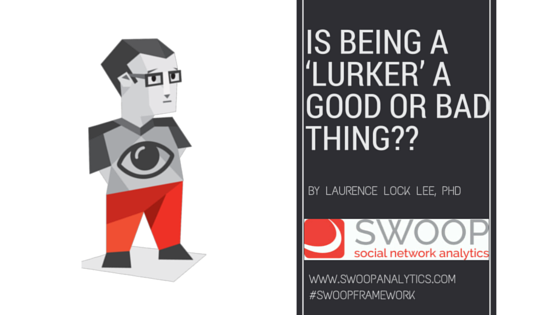
Is Being a ‘Lurker’ a Good or Bad Thing?
Lurkers are often painted in a negative context, as those that take but don’t give back. Sometimes, however, communities are designed for lurkers/observers e.g. Technical Support Forums. But even in this context one could argue that a lurker benefiting from some expert advice might still add value by acknowledging an expert contribution. So how should lurkers/observers be viewed?
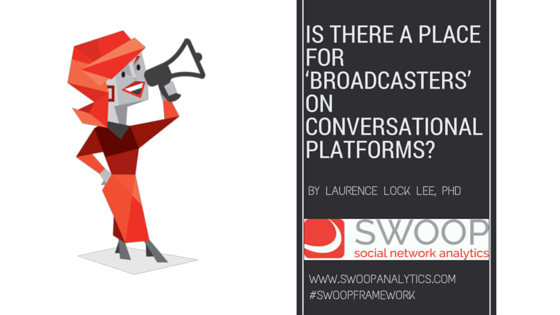
Is There a Place for ‘Broadcasters’ on Conversational Platforms? SWOOP: Broadcaster Persona
This post continues the series the deeper dives into the specific measures included in the SWOOP Collaboration Framework #swoopframework. The ‘Broadcaster’ behavioural persona; is the fourth collaboration persona with the ‘Engager’, ‘Catalyst’ and ‘Responder’ personas.
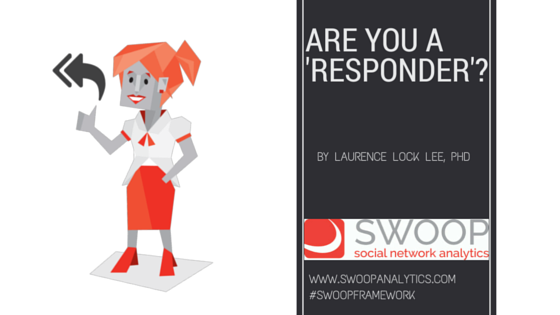
Are you a Responder?
This post continues the series the deeper dives into the specific measures included in the SWOOP Collaboration Framework #swoopframework. The ‘Responder’ Behavioural Persona is the third positive collaboration persona with the ‘Engager’ and ‘Catalyst’ personas.
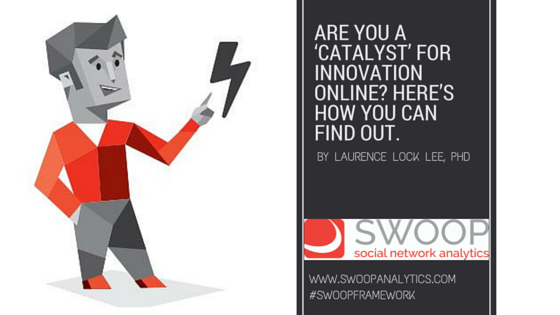
Swoop Persona: Are you a ‘Catalyst’ for Innovation Online? Here’s how you can find out.
This post continues the series of deeper dives into the specific measures included in the SWOOP Collaboration framework #swoopframework. The ‘Catalyst’ behavioural persona, in our view, is the next most desirable collaboration persona after the ‘Engager’. Catalysts are regularly seen as change agents and innovators.
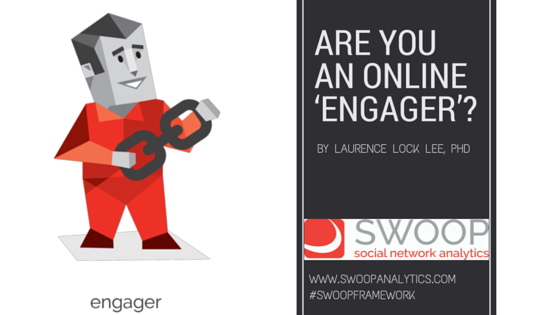
Swoop Persona: Are you an Online ‘Engager’?
This post is the first in a longer series of posts devoted to a deeper dive into the specific measures included in the SWOOP Collaboration Framework #swoopframework. We are starting with the ‘Engager’ Behavioural Persona; in our view the most desirable collaboration persona.
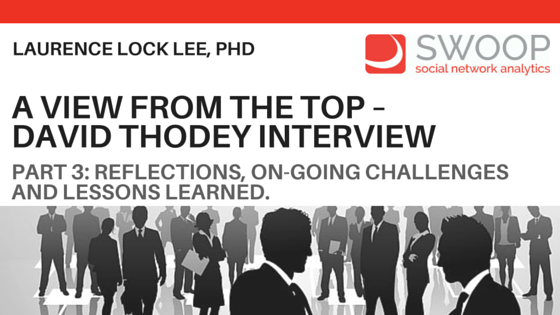
A View from the Top – David Thodey Interview Part 3 – Reflections, On-going Challenges and Lessons Learned.
We are sharing the experiences of David Thodey, the former CEO of Australia’s largest telecommunications company and strong Enterprise Social Networking advocate. In part 1 we looked at the key business issues Thodey faced in his six year tenure as CEO, and how he came to discover the ESN solution Yammer. In part 2 we traced his challenges, experiences and activities in formally adopting the platform as a key communication vehicle for the organisation. In this final part we bring it all together to provide reflections, challenges and lessons learned to those embarking on a similar path to Thodey’s.
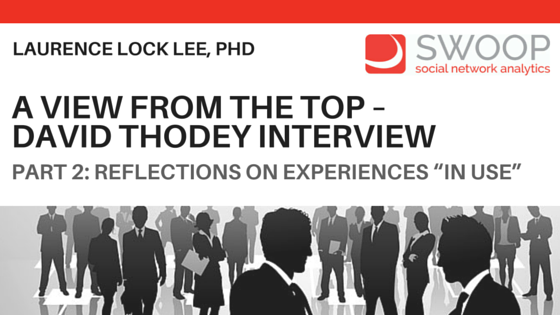
A View from the Top – David Thodey Interview Part 2 – Reflections on experiences “in use”
In Part 1 of this interview series with David Thodey, the former CEO of Telstra and strong Enterprise Social Networking advocate, we covered his reflections on current frustrations with communications experienced by CEOs and the discovery of Enterprise Social Networking (ESN) and Yammer. In this part we continue the journey of how he personally made use of the platform.
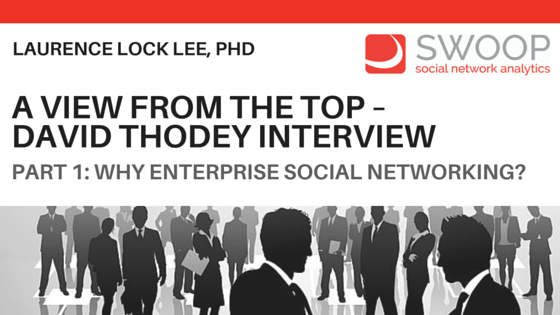
A View from the Top – David Thodey Interview – Part 1: Why Enterprise Social Networking?
In her article “Why No-one Uses the Corporate Social Network”, where Charlene Li bemoans the lack of leadership participation, David Thodey, the then CEO of Australia’s largest Telecommunications company, was highlighted as a rare exception. We were fortunate recently to be able to catch up with David to gain his reflections on Enterprise Social and the part it played in helping achieve Thodey’s vision for the company.

100% Engagement on your Yammer site: How is this possible?
In our last blog post we reported that the average engagement score on Yammer platforms was around the 20% mark. Given that many of the organisations in our sample are mature users, how could one possibly hope for 100% engagement? Well, we think the answer is simple. And that is to drive Yammer usage to the level that real work gets done; and that is to the Team Level.

80% of Enterprise Social Networking System Users are Mostly Just Looking…is this a problem?
We have been comparing organisations using Yammer over the past six months. Of the 15 organisations we have compared to date, on average 80% of actual users (not just lurkers) are active on the system less than once every 2 weeks.

User Engagement – What does this mean to you?
The term “User Engagement” has been bandied around the IT industry for decades now. To my knowledge the only other industry that refers to its customers as “Users” is the illegal drug industry. There are some similarities. The users are demanding, can’t get enough of what they want, pay too much and inevitably end up disappointed.

Working Out Loud with ESN and Analytics : A Conversation Starter
This week is Working Out Loud week #Wolweek. In celebration of this important event, this article continues our theme on smashing the productivity sound barrier; in this instance by Working Out Loud (WOL).

Corporate Communications: Talk or Tell?
In the world of corporate communications, its all about crafting and sending the message. But if we look at some other definitions we see a concession that communication can also mean a two-way interaction “… the imparting or interchange of thoughts, opinions or information…”.

Communicating Diagonally: New Value Pathways via Enterprise Social Networking?
Traditional organisational hierarchies have proven to be poorly suited to sharing information and knowledge sideways, as designed communication pathways at the base of the hierarchy would have information move vertically upward before moving across and then downward to its waiting audience. But what about “Diagonal Communication”?

How Can Yammer Match Facebook Performance?
Ever since the Gen Ys started marching into the workplace with their mobile devices and Facebook accounts, “Enterprise” leaders became paranoid about time wasting on “non-work” activities, often instituting a plethora of policy attempts to ban the use of social networking applications in the workplace. In recent times however the attitude to social networking at work has softened somewhat.

Relationship Mapping and Monitoring with Yammer
Yammer is a leading social networking platform for use inside organisations. Its recent acquisition by Microsoft is not only good for Yammer, but for the many Microsoft Enterprise clients who have been struggling to 'connect' via Sharepoint. What is most exciting for us is that the combination of Microsoft's Active Directory with Yammer's conversational platform now provides a real opportunity to implement the 'Real-time Social Business Dashboard' which will enable enterprises to move beyond their current process monitoring to see how people are really collaborating (or not) to meet organisational objectives


